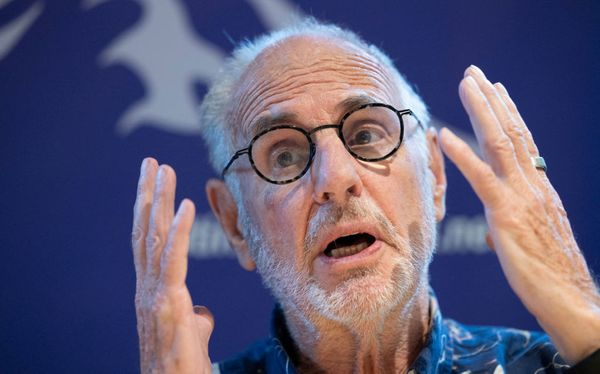It's now been 10 weeks since SVB Financial became the first FDIC-insured banks to fail in 2023, sparking a string of failures and industry chaos. The sector remains volatile, as investors keep a hair-trigger watch on regional bank stocks following the most recent failure, of First Republic Bank, on May 1.
Regulators contend that raising federal deposit insurance caps and adding new lending programs has steadied the banking system. From an investor perspective, the SPDR S&P Regional Banking ETF is down nearly 40% over the past 10 weeks, including a 14.7% dive since the start of May.
The sector still faces stress from interest rates and a looming debt ceiling deadline, among other factors. And increasing attention is turning to short-sellers, and to the possible spreading harmful misinformation to pressure the stocks.
Here is a quick review and overview of where things stand,
JPMorgan CEO Jamie Dimon
JPMorgan CEO Jamie Dimon is lobbying for regulators to consider a ban on short sales of bank stocks, echoing similar calls from industry leaders.
"The SEC has the enforcement capability to look at what people are doing by name in options, derivatives, short sales," Dimon said during an interview with Bloomberg TV Thursday. "If someone's doing anything wrong, people are in collusion, or people going short and then making a tweet about a bank, they should go after them vigorously and they should be punished to the full extent the law allows it."
The White House vowed to monitor "short-selling pressures on healthy banks," on May 4. And the American Bankers Association urged regulators to investigate a surge in short sales of bank stocks.
Securities and Exchange Commission Chair Gary Gensler issued a statement late Thursday on current market events. "As I've said, in times of increased volatility and uncertainty, the SEC is particularly focused on identifying and prosecuting any form of misconduct that might threaten investors, capital formation, or the markets more broadly," Gensler wrote.
Gensler issued a similar statement on March 12 at the start of the bank crisis. "We will investigate and bring enforcement actions if we find violations of the federal securities law," Gensler wrote at the time.
Heavily-Battered Banks
The bank turmoil started with the rapid collapse of Silvergate Capital. It announced plans to wind down operations and voluntarily liquidate Silvergate Bank on March 8. Then, Silicon Valley Bank began flashing signs of struggle on March 10. Massive unrealized losses began mounting for bank investment arms that had misjudged the impact of rising interest rates.
Frightened depositors began withdrawing funds from a number of regional banks. That compounded the stress, leading shareholders to dump stocks. Within two days, the New York State Department of Financial Services closed Signature Bank and placed it under the receivership of the Federal Deposit Insurance Corporation (FDIC).
The Federal Reserve noted in its Financial Stability Report for May that banks with high levels of uninsured deposits and excessive exposure to interest rate risk have the biggest weaknesses. The report also warned that banks with large exposure to commercial real estate (CRE) are also at risk.
Fed data shows prices declined by 1.9% year-over-year across CRE market segments in Q4, but remain at record levels. Banks hold 60% of CRE loans. Two-thirds of those are held by small banks with less than $100 billion in assets.
The CRE loan losses will depend on the borrower's leverage. Those with substantial equity cushions are less likely to default. And banks that issue loans with higher loan-to-value ratios will see greater stress as those loans are harder to refinance and modify, the Fed said.
First Republic Is The Second-Largest U.S. Bank Failure. What Comes Next?
Western Alliance Bancorp
Western Alliance denied unconfirmed reports from the Financial Times last week that the bank hired advisors to explore strategic options, including selling parts or all of its business. Phoenix-based Western Alliance called the reports "categorically false in all respects." The bank said it plans to explore legal options in response to the article.
Shares spiraled during trading after the FT article but pared some of the losses since.
In an update Thursday, Western Alliance noted it had "stable deposits." The bank's deposits rose to $49.4 billion as of May 9, increasing by $600 million from May 2 and improving from $47.6 billion as of March 31. Western Alliance said insured deposits represented 79% of total deposits as of May 9, compared to 68% as of March 31. The bank's readily available liquidity is "approximately double" the amount of uninsured deposits as of May 9, according to Western Alliance. The bank maintained its current-quarter guidance to increase deposits by $2 billion quarter-over-quarter.
WAL stock ended Friday down 54.8% year-to-date, including a 26% decline in May.
PacWest Bancorp
PacWest stock is down more than 80% so far this year, but the Los Angeles-based outfit said it has more than enough liquidity to cover uninsured deposits. As of May 10, total immediately available liquidity was $15 billion compared to $5.2 billion in uninsured deposits. The bank's coverage ratio currently stands at a solid 288%.
PacWest increased its borrowings by $10.1 billion in the first quarter to $11.88 billion. PacWest secured $4.9 billion from the new federal Bank Term Funding Program and $4.2 billion in secured advances from the Federal Home Loan Banks, as well as $1.4 billion from a new repurchase agreement facility. Additional available borrowing capacity was $5.8 billion as of March 31.
That should leave the bank in good shape to cover any possible run on deposits. But the stock has remained flighty, dropping 55% in the past two weeks. How much of that is due to investor fears, and how much my be due to short sellers, remains unclear. Short sales represented 20% of the stock's average daily volume on Friday.
Zions Bancorp
In its Q1 earnings report on April 19, Zions noted deposits fell to $69.2 billion for the quarter, down 3.3% from Q4 and 16% from last year. Analysts had predicted deposits would slide to $69.5 billion. As of March 31, uninsured deposits were $31.4 billion, or 45% of total deposits, down from 53% in Q4.
Down 55% so far this year, ZION stock remains vulnerable. Shares leveled off for a few weeks through mid-April, then veered into a four-week slide that cut another 25% from its market value.
Comerica
Dallas-based Comerica noted average deposits fell to $67.83 billion in the first quarter, down 4.9% from Q4 and 14.2% from last year, respectively. The bank said deposits decreased by $3.7 billion since the beginning of the banking crisis in its April earnings report.
Comerica reported uninsured deposits decreased by $10.5 billion to $35 billion, or 54% of total deposits in its most recent quarter. The bank added $13.8 billion in liquidity in the quarter to provide a buffer.
CMA stock tumbled 51% year-to-date. More than half of that decline occurred in May.
KeyCorp
Cleveland, Ohio-based KeyCorp's average deposits totaled $143.4 billion for the first quarter, down $6.8 billion from last year. Uninsured deposits sat at 44% as of Q1, improving from 47% at year-end. KeyCorp had $76.9 billion in available contingent liquidity as of March 31 according to the bank's most recent update.
For the year, KeyCorp expects average deposits to be flat or down 2%, while net interest income declines 1% to 3%.
KEY stock carved 20% lower so far in May, bringing its year-to-date loss to 47%.
First Horizon National
First Horizon and Toronto-Dominion Bank mutually agreed to scrap their merger deal on May 4, after it was announced last February.
Total deposits fell to $61.44 billion as of March 31, down from $63.49 billion at year-end. Total uninsured deposits were $27.8 billion as of March 31, or 45% of the total, down from 48% as of Dec. 31. Of the uninsured deposits, about 8% were collateralized, First Horizon announced in its Q1 results.
FHN stock's losses accelerated, dropping almost 45% in May and ending Friday down 60% so far this year.
Will Fed Debt Discussions Affect Banks?
At the federal level, Dimon said in the Bloomberg interview that he doesn't expect the to see the first-ever government debt default, but time is running short.
"The closer you get to it, you will have panic," he said.
How might that affect banks? Dimon still believes regional banks are "quite strong" after reporting earnings, but managers remain worried after the bank runs.
Dimon assumes there's "a little bit more" to the regional banking crisis and the industry should "just be prepared for problems." He urged regulators to put an end to the chaos but warned against overreacting. Overdoing certain rules, requirements and regulations will only cause more problems for community banks, he said.
Banks: Crisis Timeline
After the failures of Silvergate, SVB and Signature banks, regulators granted SVB and Signature Bank systemic risk exemptions following their failures. The move lifted the $250,000 deposit insurance cap from the FDIC.
On March 12, the Federal Reserve launched the Bank Term Funding Program. The new program provides eligible banks and other institutions with emergency loans to help "meet the needs of all their depositors."
The Treasury Department made up to $25 billion available from the Exchange Stabilization Fund to backstop the BTFP.
Investors Fear 12 Major Banks Are Still A Hot Mess
The FDIC brokered a deal for New York Community Bancorp subsidiary Flagstar Bank to buy substantially all of Signature Bank's assets on March 19. And First Citizens Bancshares purchased all of Silicon Valley Bank's assets and deposits in late March.
Regulators seized First Republic Bank on May 1 and immediately sold it to JPMorgan Chase after two different rounds of infusions. On March 12, FRC secured $70 billion in liquidity through additional Fed borrowing capacity, funding access with the Federal Home Loan Bank and financing through JPMorgan. Then on March 16 it received a $30 billion deposit injection from the 11 largest banks, led by JPMorgan.
Overseas, UBS Group (UBS) acquired Credit Suisse on March 20.
You can follow Harrison Miller for more stock news and updates on Twitter @IBD_Harrison







